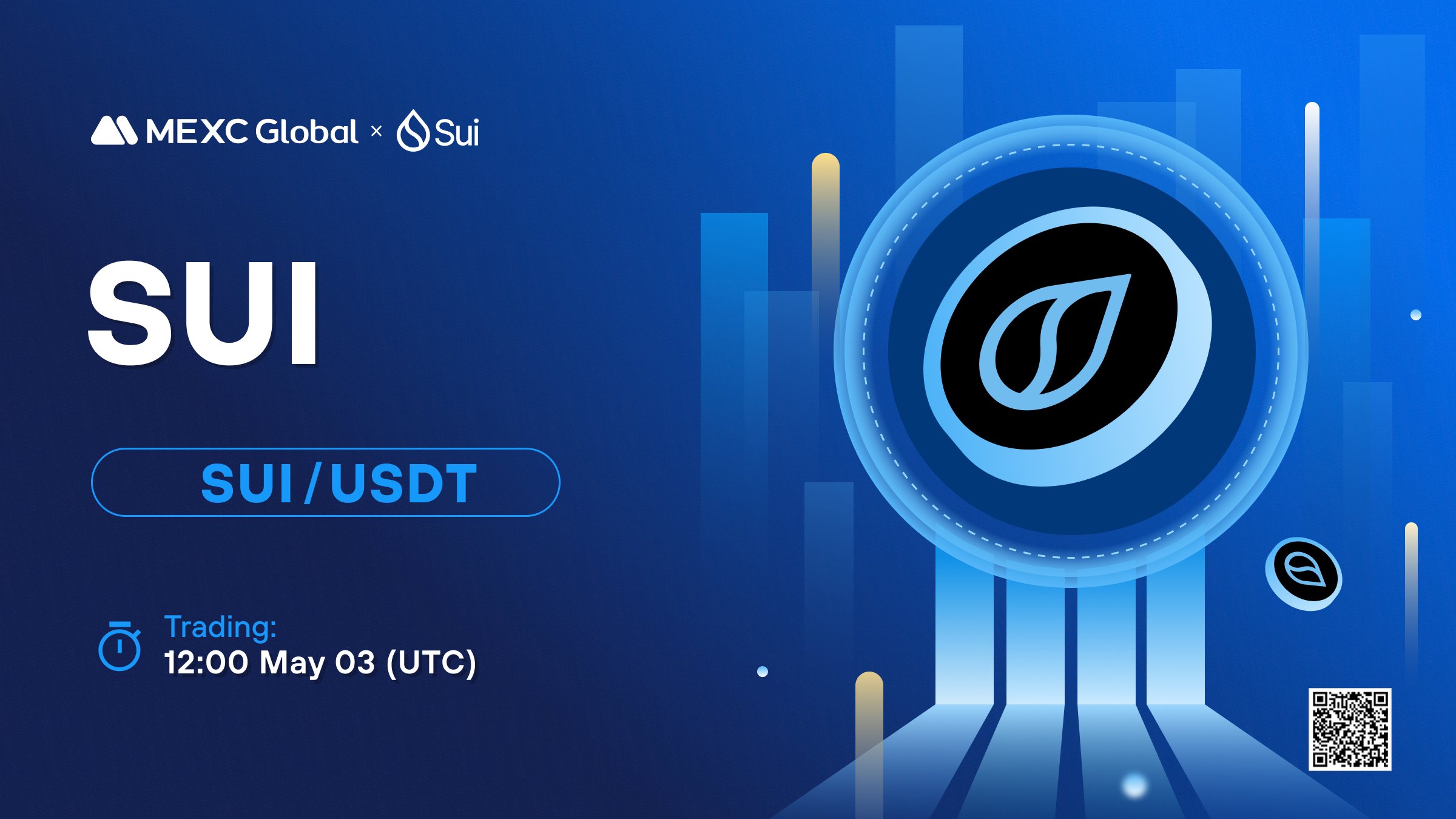
In the rapidly evolving landscape of blockchain technology, The Open Network (TON) emerges as a groundbreaking fifth-generation blockchain that promises to bridge the gap between cryptocurrency and mainstream adoption. This comprehensive guide explores TON’s revolutionary architecture, its unique integration with Telegram’s 900 million users, and why it’s positioned to become one of the most significant blockchain platforms in the Web3 era. Whether you’re a crypto enthusiast, developer, or newcomer curious about the next evolution of blockchain technology, this article will provide you with deep insights into TON’s infinite sharding technology, its native Toncoin cryptocurrency, and the vast ecosystem of decentralized applications it powers.
Key Takeaways
- Revolutionary Architecture: TON is a fifth-generation blockchain with infinite sharding capability, theoretically processing millions of transactions per second through its unique multi-blockchain design of masterchains and workchains.
- Telegram Integration: As Telegram’s official Web3 infrastructure since 2023, TON has direct access to 900 million users, enabling cryptocurrency transactions as simple as sending a message.
- Solving the Blockchain Trilemma: TON addresses scalability, security, and decentralization simultaneously through its innovative design, maintaining sub-second finality and minimal fees regardless of network load.
- Community Revival: After Telegram’s initial project was halted by SEC action in 2020, the TON Foundation revived the open-source code in 2021, later receiving Pavel Durov’s endorsement.
- Comprehensive Ecosystem: Beyond payments, TON powers DeFi applications, gaming, NFTs, decentralized storage, and human-readable domain names through TON DNS.
- Tokenomics: With a maximum supply of 5 billion TON coins and approximately 3.5 billion in circulation, the network implements a controlled inflation model around 2% annually to reward validators.
- Mainstream Potential: TON’s combination of technical excellence and unprecedented user access through Telegram positions it uniquely to achieve widespread blockchain adoption in ways previous generations couldn’t.
Table of Contents
What is TON Coin and The Open Network?
TON Coin, or Toncoin, is the native cryptocurrency of The Open Network (TON), a decentralized layer-1 blockchain that represents one of the most ambitious attempts to create a truly scalable, user-friendly blockchain platform. Originally conceived by Dr. Nikolai Durov and developed with the backing of Telegram, TON has evolved into a community-driven project that combines cutting-edge technology with unprecedented accessibility through its integration with one of the world’s most popular messaging platforms.
The Open Network distinguishes itself through its unique multi-blockchain architecture, consisting of a masterchain and up to 2^32 workchains, each capable of splitting into 2^60 shardchains. This revolutionary design enables TON to theoretically process millions of transactions per second while maintaining decentralization and security. As of 2025, TON has achieved a circulating supply of approximately 3.5 billion tokens out of a maximum supply of 5 billion, with the network processing over 1 million daily transactions.
What makes TON particularly significant in the blockchain landscape is its official designation as Telegram’s Web3 infrastructure since September 2023. This partnership provides TON with direct access to Telegram’s massive user base, enabling features like in-app cryptocurrency transfers, payments for Telegram Premium, and seamless integration of Web3 services within a familiar messaging interface. The combination of advanced technology and mainstream accessibility positions TON as a potential catalyst for mass blockchain adoption.
TON Token vs The Open Network: Key Differences
Understanding the distinction between TON and Toncoin is crucial for grasping how this ecosystem functions. The Open Network (TON) refers to the entire blockchain infrastructure – a comprehensive platform that includes the multi-blockchain system, smart contract capabilities, decentralized services, and the complete technological stack that enables scalable decentralized applications. TON encompasses the masterchain, workchains, shardchains, and all the protocols that allow these components to interact seamlessly.
Toncoin, on the other hand, is the native utility token that powers this ecosystem. It serves as the fundamental economic unit within TON, functioning as the primary medium for transaction fees, validator stakes, smart contract execution, and value transfer across the network. When users pay for transactions, stake tokens to become validators, or interact with decentralized applications on TON, they use Toncoin. This relationship mirrors that of Ethereum and ETH – where Ethereum is the platform and ETH is its native currency.
The symbiotic relationship between TON and Toncoin is essential to the network’s operation. While TON provides the technological infrastructure for building and running decentralized applications, Toncoin creates the economic incentives that secure the network, compensate validators, and facilitate value exchange between participants. Without Toncoin, the TON network would lack the economic mechanisms necessary for consensus, security, and sustainable operation.
Why TON Crypto Matters: Problems and Solutions
The Open Network addresses several fundamental limitations that have plagued earlier generations of blockchain technology. The primary challenge TON tackles is the blockchain trilemma – the seeming impossibility of achieving scalability, security, and decentralization simultaneously. While Bitcoin processes roughly 7 transactions per second and Ethereum manages about 15-30, modern applications require throughput measured in thousands or millions of transactions per second. TON’s infinite sharding paradigm provides a solution by treating each account as if it exists in its own blockchain, then efficiently grouping these “account-chains” into shardchains that can process transactions in parallel.
Beyond pure scalability, TON addresses the critical usability gap that has prevented blockchain technology from achieving mainstream adoption. Traditional blockchain interactions require users to manage complex wallet addresses, understand gas fees, and navigate unfamiliar interfaces. TON’s integration with Telegram transforms this experience by enabling cryptocurrency transactions as simple as sending a message. Users can send funds using human-readable TON DNS names instead of cryptographic addresses, and the familiar Telegram interface eliminates the learning curve typically associated with blockchain applications.
TON also solves the economic inefficiency of existing blockchain networks. In Ethereum, for example, network congestion can drive gas fees to hundreds of dollars for simple transactions, making the network unusable for everyday payments or micropayments. TON’s dynamic sharding automatically adjusts network capacity based on demand, keeping transaction fees minimal (typically fractions of a cent) regardless of network load. This economic efficiency, combined with sub-second transaction finality through Instant Hypercube Routing, makes TON suitable for real-world payment applications, from content monetization to cross-border remittances.

The Open Network History: From Telegram to TON Token
The Open Network’s journey began in 2018 when Telegram founders Pavel and Nikolai Durov launched the Telegram Open Network, raising an unprecedented $1.7 billion to create a blockchain platform for Telegram’s users. However, in October 2019, the SEC obtained an injunction claiming the GRAM token sale was an unregistered securities offering, leading to Telegram’s withdrawal from the project in June 2020 after settling for $1.2 billion in refunds.
The project found new life when Anatoliy Makosov and Kirill Emelianenko established the TON Foundation in 2021, leading community development of the open-sourced code and renaming the token to Toncoin. The pivotal moment came on December 23, 2021, when Pavel Durov publicly endorsed the community-driven chain as “the continuation of our vision,” followed by Telegram’s official adoption of TON as its Web3 infrastructure in September 2023, transforming it from a community project into a blockchain with mainstream reach.

TON Coin Features: What Makes The Open Network Unique
1. Infinite Sharding Technology
TON implements dynamic sharding that can split workchains into up to 2^60 shardchains based on network load. This enables the network to process transactions in parallel, theoretically supporting millions of transactions per second while maintaining decentralization.
2. Instant Hypercube Routing
A breakthrough technology enabling near-instantaneous message delivery between shardchains within a single block cycle (~5 seconds). Messages travel through optimal paths in a hypercube network topology, with fast paths that can bypass intermediate chains entirely.
3. Advanced TON Virtual Machine (TVM)
TVM supports flexible arithmetic operations (64-bit, 128-bit, and 256-bit), built-in overflow checks, and native complex data structures through its cell-based architecture. Each cell can contain up to 128 bytes of data and four references to other cells, enabling efficient representation of trees and directed acyclic graphs.
4. Self-Healing Vertical Blockchains
TON’s two-blockchain mechanism allows invalid blocks to be corrected without creating permanent forks. Each block is actually a small vertical blockchain that can be extended to fix errors while maintaining network integrity.
5. Proof-of-Stake Consensus with BFT
The network uses a modified PoS consensus with Byzantine Fault Tolerance, ensuring security through economic incentives. Validators stake TON tokens and can be slashed for misbehavior, creating a robust security model.
6. Seamless Telegram Integration
Native integration with Telegram’s 900 million users enables cryptocurrency transactions as simple as sending messages. Users can transact using human-readable addresses through TON DNS instead of complex cryptographic strings.
TON Crypto Use Cases: Real Applications Today
Within Telegram, TON powers essential services including payments for Telegram Premium, cryptocurrency-based advertising purchases, and the innovative username auction platform Fragment.com. These integrations have seamlessly introduced millions to blockchain technology through familiar interfaces. The DeFi ecosystem thrives with STON.fi leading as the primary decentralized exchange, processing hundreds of millions in volume while maintaining TON’s characteristic low fees and fast finality.
Beyond financial applications, TON supports a vibrant gaming ecosystem where true asset ownership through NFTs combines with high-throughput gameplay impossible on slower chains. The TON DNS system has registered over 50,000 .ton domains, providing human-readable addresses that integrate directly with Telegram payments. Additional infrastructure services like TON Storage for decentralized file storage and TON Proxy for privacy-preserving network access demonstrate the platform’s vision of complete Web3 infrastructure built on blockchain foundations.

Tokenomics of TON
The Open Network’s tokenomics are carefully designed to balance scarcity with sustainable network growth. With a maximum supply cap of 5 billion TON coins, the network implements a controlled inflation model that rewards validators while maintaining long-term value. The current circulating supply stands at approximately 3.5 billion TON, with the remaining tokens to be distributed through validator rewards and ecosystem development over the coming decades. This distribution model ensures that early participants are rewarded while maintaining incentives for long-term network security.
The inflation mechanism in TON is intrinsically tied to network validation, with new tokens minted as rewards for validators who secure the network. The annual inflation rate is designed to hover around 2%, assuming roughly 10% of the total supply is staked for validation at any given time. This creates a sustainable economic model where validators earn approximately 20% annual returns on their stakes when performing their duties diligently. However, this inflation is offset by a deflationary mechanism: when validators misbehave by signing invalid blocks or going offline, portions of their stakes are slashed and burned, permanently removing those tokens from circulation.
Distribution of newly minted tokens follows a sophisticated model that considers validator performance, stake size, and network participation. Validators must stake a minimum amount (configurable by network governance) to participate in block production, with rewards distributed proportionally to stake size and actual participation in consensus. The system also supports nominators who can delegate their tokens to validators, earning a portion of the rewards while sharing the risks of potential slashing. This creates a robust economic security model where the cost of attacking the network far exceeds any potential benefits.
Storage fees introduce another unique aspect to TON’s tokenomics. Unlike Ethereum where storage is essentially free after initial deployment, TON charges ongoing fees for maintaining smart contract state on-chain. These fees, calculated based on the number of cells and bytes stored, incentivize efficient use of blockchain storage and provide additional revenue streams for validators. Accounts that fail to maintain sufficient balance for storage fees can be frozen and eventually deleted, ensuring the blockchain doesn’t become bloated with abandoned data.

What is TON Coin Used For: Token Functions
1. Transaction Fee Payment
Every operation on TON requires tokens for gas payments, from simple transfers to complex smart contract executions. The deterministic fee model ensures predictable costs while eliminating fee market manipulation.
2. Validator Staking and Network Security
Validators must stake significant amounts of TON to participate in block production, with minimum stakes determined by network parameters. This creates economic incentives for honest behavior while reducing circulating supply.
3. Smart Contract Execution Fuel
TON powers the TON Virtual Machine, with every computational operation consuming gas paid in tokens. The sophisticated gas model accounts for computation, storage operations, and message passing between contracts.
4. Cross-Chain Message Routing
Inter-blockchain communication within TON’s ecosystem requires tokens for message forwarding fees. Validators collect these fees at each hop in the hypercube routing system, creating an efficient market for cross-chain communication.
5. Ecosystem Services Payment
TON serves as the payment method for all network services including TON DNS domain registration, TON Storage file hosting, and TON Proxy anonymous networking. This diverse utility drives token demand beyond pure speculation.
6. Governance Participation
Token holders can participate in network governance through validator voting on protocol upgrades and parameter changes. This decentralized governance ensures the network evolves according to community consensus.
The Future of The Open Network
The Open Network targets an ambitious goal of onboarding 500 million users to Web3 by 2028, leveraging its unique position as Telegram’s blockchain infrastructure. Technical priorities focus on pushing scalability toward millions of TPS through sharding optimizations and developing new smart contract languages including Java-like, Haskell-inspired, and ML-style options to expand the developer ecosystem. Cross-chain bridges to major blockchains and advanced cryptographic primitives for zero-knowledge proofs will enable TON to serve as a universal blockchain hub.
The ecosystem expansion strategy capitalizes on Telegram’s global reach, particularly in emerging markets where traditional banking is limited. Direct fiat on-ramps within Telegram, educational initiatives, and local partnerships will drive real-world utility. With the TON Foundation’s grants fostering thousands of applications across gaming, social media, and finance, combined with Telegram’s unprecedented distribution advantage, TON is uniquely positioned to achieve what earlier blockchains couldn’t: true mainstream adoption at global scale.

TON vs Other Crypto: Competitive Analysis
TON faces competition from established Layer 1 blockchains but maintains unique advantages through its fifth-generation architecture and Telegram integration.
- Ethereum, the second-largest blockchain, processes only 15-30 TPS with high gas fees, while TON’s infinite sharding enables millions of TPS with negligible costs.
- Solana achieves 65,000 TPS but suffers from frequent outages and centralization concerns, whereas TON maintains decentralization through its multi-blockchain design.
- Near Protocol implements sharding but lacks TON’s sophisticated instant message routing between shards.
TON’s true competitive advantage lies beyond technical specifications. While competitors like Polkadot, Cosmos, and newer entrants like Aptos and Sui must build user bases from scratch, TON has direct access to Telegram’s 900 million users. This solved distribution problem, combined with seamless user experience where crypto transactions feel like sending messages, positions TON uniquely in the market. Competitors may match individual technical features, but none can replicate TON’s combination of advanced technology, massive user base, and intuitive integration that makes blockchain invisible to end users.

How to Buy TON Coin: Step-by-Step Guide
Purchasing TON has become increasingly accessible through multiple avenues, with MEXC standing out as a premier platform for acquiring this revolutionary cryptocurrency. As one of the leading global exchanges, MEXC offers deep liquidity, competitive fees, and a user-friendly interface that makes buying TON straightforward for both beginners and experienced traders.
- Create a MEXC account: Visit MEXC’s official website and register with your email. Complete KYC verification which typically takes just minutes.
- Deposit funds: Add funds via bank transfer, credit/debit card, or cryptocurrency transfer. USDT is recommended for its stability and wide acceptance.
- Navigate to TON trading: Go to the spot trading section and search for TON/USDT.
- Place your order: Choose between market orders for immediate execution or limit orders for specific prices. Enter your desired amount and confirm the transaction.
Conclusion
The Open Network represents a paradigm shift in blockchain technology, solving critical challenges that have limited mainstream adoption through its revolutionary infinite sharding architecture and seamless Telegram integration. By enabling millions of transactions per second with negligible fees while making blockchain interactions as simple as messaging, TON bridges the gap between crypto-native communities and everyday users.
With strong technical foundations, a growing ecosystem, and access to Telegram’s 900 million users, TON stands uniquely positioned to catalyze the next wave of Web3 adoption. Whether as an investment opportunity, development platform, or gateway to decentralized services, understanding TON’s innovative approach is essential for navigating the evolving blockchain landscape where technical excellence meets real-world accessibility.
Join MEXC and Get up to $10,000 Bonus!
Sign Up


